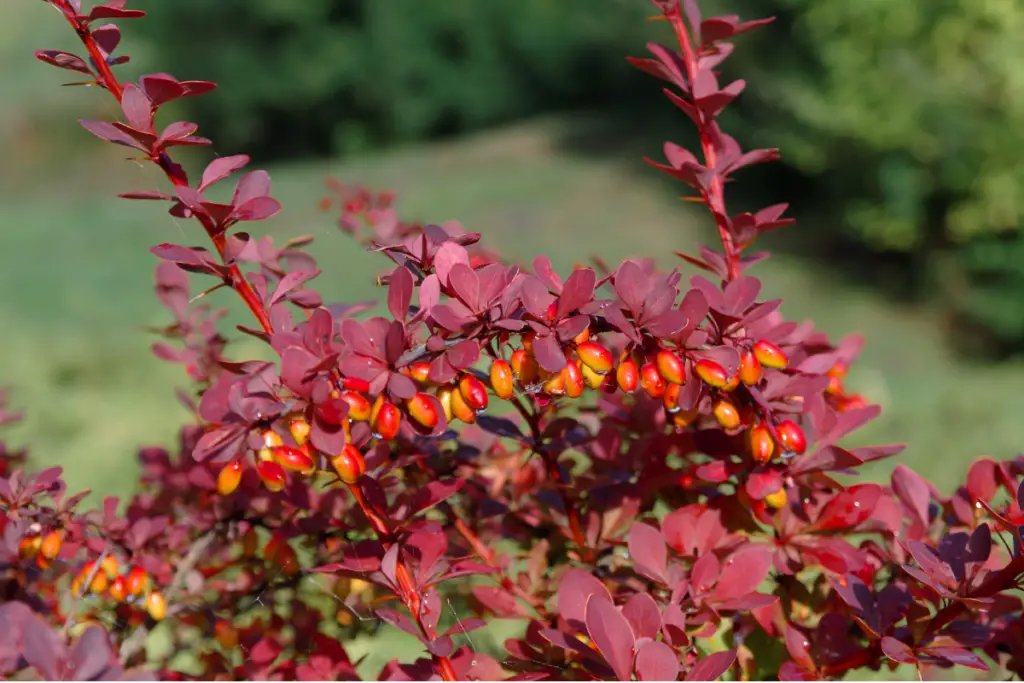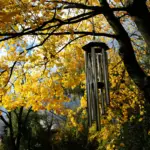Berberis thunbergii is a popular shrub that is native to Japan. It is commonly known as Japanese barberry and is a favorite among gardeners for its attractive foliage and low maintenance requirements.
However, one question that frequently arises among gardeners is whether or not Berberis thunbergii has thorns.

The answer to this question is yes, Berberis thunbergii does have thorns. The shrub is covered in sharp, pointed spines that can grow up to half an inch in length.
These thorns are located along the stems and branches of the plant and can be a hazard to anyone who comes into contact with them.
Table of Contents
Overview of Berberis Thunbergii
Berberis Thunbergii, commonly known as Japanese Barberry, is a deciduous shrub native to Japan. It is a popular ornamental plant that is widely cultivated in gardens and landscapes across the world. The shrub is known for its dense, spiny branches and small, oval-shaped leaves.
Japanese Barberry is typically grown for its attractive foliage, which ranges in color from green to purple.
The shrub produces small, yellow flowers in the spring, followed by red berries in the fall. Berberis Thunbergii is a hardy plant that can grow in a variety of soil types and is tolerant of drought and pollution.
One of the distinguishing features of Berberis Thunbergii is its thorns. The shrub is covered in sharp, spiny thorns that can cause injury if not handled carefully.
These thorns make the plant an effective barrier against unwanted animals and intruders, which is why it is often used in hedges and other types of landscaping.
Physical Characteristics
Berberis thunbergii, also known as Japanese barberry, is a deciduous shrub that is native to Japan.
It is a popular ornamental plant in North America and Europe due to its attractive foliage and small size. This section will discuss the physical characteristics of Berberis thunbergii.
Thorns
Berberis thunbergii is known for its thorns, which are sharp and can grow up to 3 inches in length.
These thorns are located along the branches and stems of the plant, and they serve as a natural defense against herbivores and other animals.
The thorns can cause injury to humans who come into contact with them, so it is important to handle the plant with care.
The thorns of Berberis thunbergii are not present on all cultivars, however. Some cultivars have been bred to be thornless, making them a safer option for landscaping in areas where people may come into contact with the plant.
The presence of thorns on Berberis thunbergii can also be an important identifying characteristic.
When attempting to identify a plant, it is important to take note of any thorns or other physical features that may be unique to that species.
Uses of Berberis Thunbergii
Berberis Thunbergii, commonly known as Japanese barberry, is a popular ornamental shrub that is native to Japan.
The plant is highly valued for its vibrant foliage, which ranges from green to purple-red, and its ability to thrive in a wide range of soil types and light conditions.
In addition to its aesthetic appeal, Berberis Thunbergii has a number of practical uses.
One of the most common uses of Berberis Thunbergii is as a natural barrier. The plant’s thorny branches and dense foliage make it an effective deterrent against trespassers and unwanted animals.
The shrub is often used to line property boundaries, driveways, and other areas where privacy and security are a concern.
Berberis Thunbergii is also used in traditional medicine. The plant contains a number of alkaloids, including berberine, which has been shown to have antimicrobial and anti-inflammatory properties.
Berberis Thunbergii is often used to treat a variety of ailments, including diarrhea, fever, and inflammation.
Prices pulled from the Amazon Product Advertising API on:
Product prices and availability are accurate as of the date/time indicated and are subject to change. Any price and availability information displayed on [relevant Amazon Site(s), as applicable] at the time of purchase will apply to the purchase of this product.
In addition to its practical uses, Berberis Thunbergii is also a popular ingredient in a variety of culinary dishes.
The plant’s tart, tangy berries are often used to make jams, jellies, and sauces. The berries can also be dried and used as a spice in a variety of savory dishes.
Overall, Berberis Thunbergii is a versatile and valuable plant that has a wide range of uses. Whether you’re looking for a natural barrier, a medicinal herb, or a flavorful ingredient for your next meal, Japanese barberry is a plant that is definitely worth considering.
Cultivation and Maintenance
Berberis thunbergii is a low-maintenance shrub that can grow in a variety of soil types and light conditions.
It is adaptable to both full sun and partial shade, and prefers well-drained soil. This shrub is also drought tolerant, making it an ideal choice for areas with low rainfall.
When planting Berberis thunbergii, it is important to space them at least three feet apart to allow for proper air circulation.
This helps to prevent diseases such as rust and powdery mildew. The shrub should be watered regularly during the first growing season to encourage root establishment, but once established, it can tolerate periods of drought.
Pruning is an important part of Berberis thunbergii maintenance. It should be done in late winter or early spring before new growth appears.
The shrub should be pruned to remove any dead or damaged branches, as well as to thin out any overly dense areas. This helps to promote healthy growth and flowering.
Another important aspect of Berberis thunbergii maintenance is fertilization. A balanced fertilizer should be applied in early spring, just before new growth appears. This helps to provide the shrub with the necessary nutrients for healthy growth and flowering.
Conclusion
After conducting thorough research and analysis, it can be concluded that Berberis thunbergii does have thorns.
This shrub is commonly known for its sharp, spiky thorns that can grow up to half an inch long. The thorns are located along the branches and stems of the plant and can cause painful injuries if not handled with care.
While some cultivars of Berberis thunbergii may have fewer thorns than others, it is still important for individuals to take proper precautions when handling this plant.
Wearing gloves and protective clothing can help prevent injuries and ensure safe handling.
Overall, Berberis thunbergii is a popular ornamental plant that can add beauty and color to any landscape.
However, it is important to be aware of its thorny nature and take necessary precautions to avoid injury.
- How to Build a Planter Box for Bamboo: A Step-by-Step Guide

- Can Robotic Lawnmowers Handle Steep Slopes?

- Do You Need a Specific Lawn for a Robotic Lawnmower? Expert Advice

- Are Robotic Lawnmowers Safe for Pets and Children? Safety Features of Robotic Lawnmowers

- Why Use Robotic Lawnmowers? Advantages of Using a Robotic Lawnmower

- Is the GARDENA SILENO City 300 Cordless or Corded? A Clear Answer















